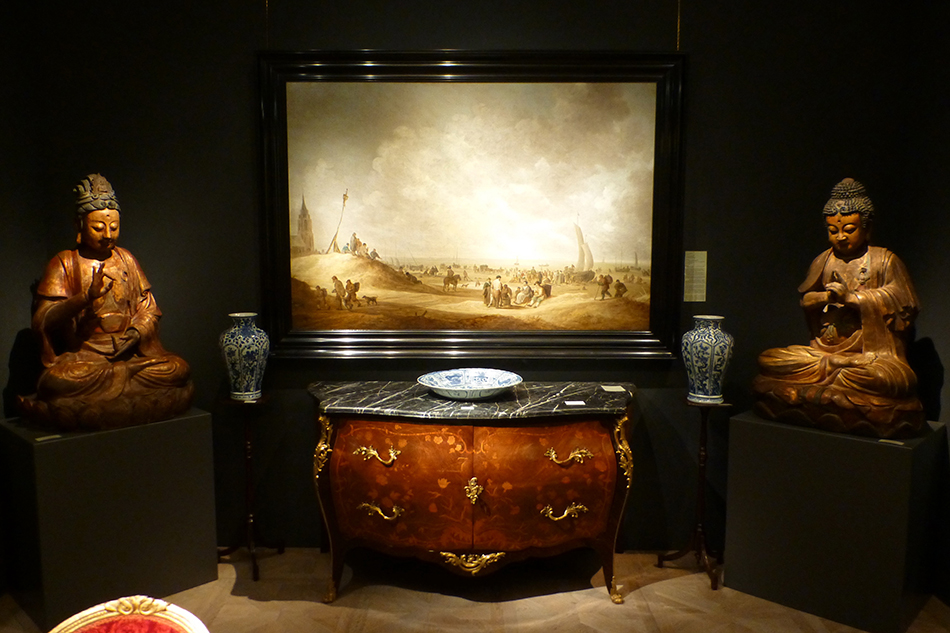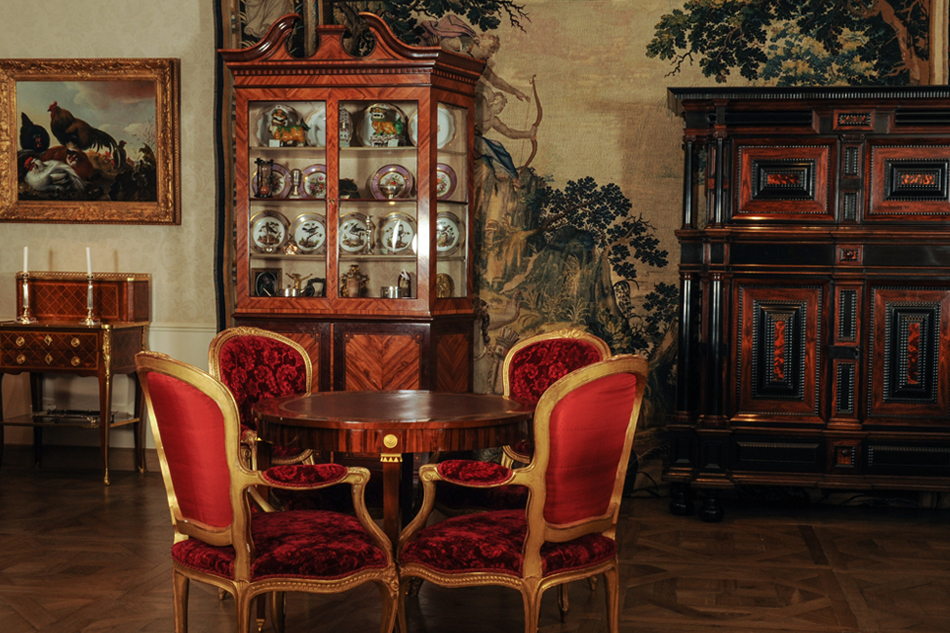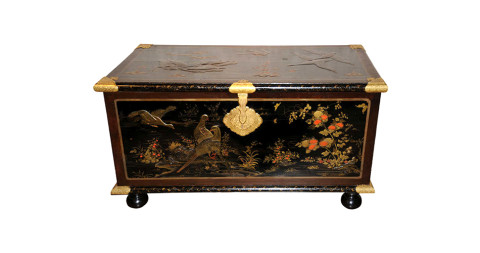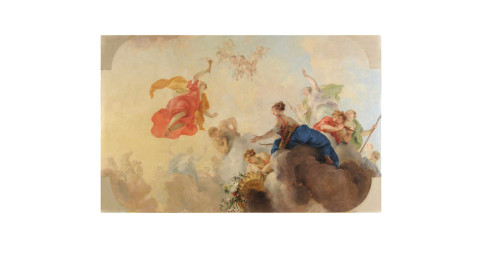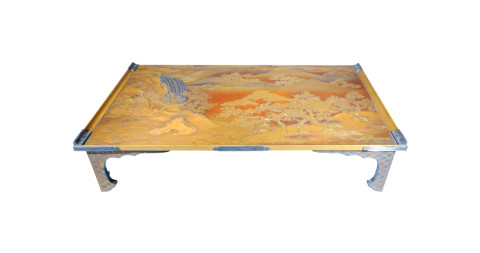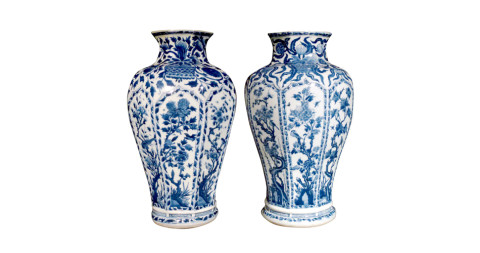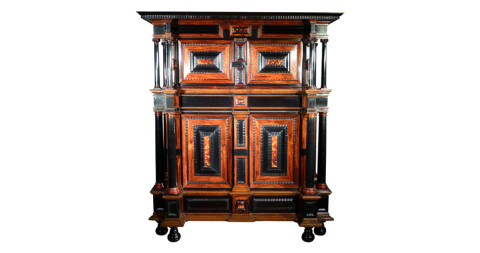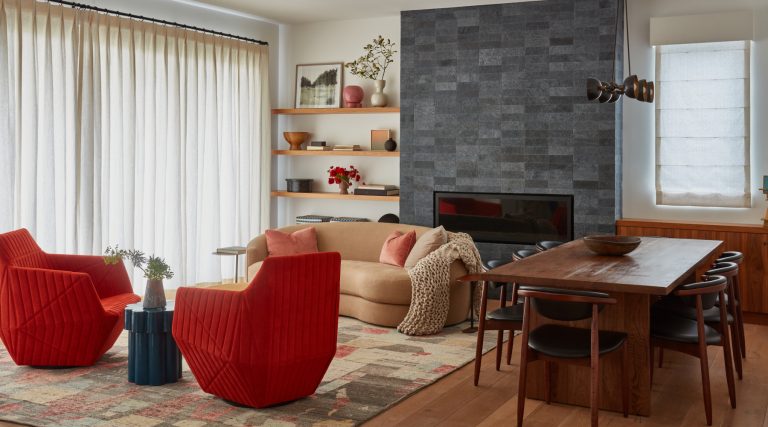
March 19, 2014From his gallery just outside of Amsterdam, Dutch antiquiare and master restorer Pieter Hoogendijk presides over a prized assortment of 17th-century Japanese lacquerware and 18th-century northern European furniture and decorative arts. Photos by Maria Cavali
Sometimes a curse can turn out to be a blessing. Pieter Hoogendijk’s father was so dismayed when his son dropped out of school that he cut him off financially, at age 20, just after his mother died. “He gave me no money, not a penny, no nothing,” says the younger Hoogendijk, a cheerful and robust Dutchman, now 65, with a ready smile and pale blue eyes. “I went to Amsterdam, and there I was lucky to find a cellar where I could work.”
In that cellar, on the Nieuwe Spiegelstraat, Amsterdam’s main street for museum-quality antique shops, Hoogendijk set up an atelier and practiced some of the skills he’d learned at technical school — woodworking, woodturning and French polishing — and proved he had a great deal of talent. Thankfully, as he put it, he discovered that “there were a lot of dealers on the Nieuwe Spiegelstraat who were very happy to have a restorer right on the street.”
Hoogendijk supplemented his income as a restorer with work as an art handler at Mak van Waay (which later became Sotheby’s Amsterdam) and by assisting a jewelry dealer. And this proved to be just the right trifecta of experiences to become what he is now: one of the world’s leading dealers in 18th-century northern European furniture and 17th-century Japanese lacquerware, who just so happens to restore everything he offers himself.
Hoogendijk didn’t know he’d eventually become a dealer in his own right, but a year on the Spiegelstraat gave him a taste of what it might be like. So, in 1971, he moved to France, reasoning that learning French was a skill necessary for international trade. Learning the language had another side benefit, too: The main subject that had tripped him up in school had been French, he says today, and he thought learning to speak it fluently, while living France, would finally prove his father wrong about his ambition.
“I took a meat lorry to Paris for fifteen guilders, and I stayed in a hotel for fourteen francs a night on the Rue Saint-Denis in Les Halles,” he recalls. “After three days, I found an apprenticeship in a workshop for furniture restoring with Claude Bonnal, at that time the biggest restorer in Paris, where eighteen people were working.” At the same time, he attended workshops in the restoration of Japanese lacquer pieces at a little antiques atelier on the Rue Henri Monnier, and studied French at the Sorbonne.

In the foreground, a 12–light French Empire chandelier, ca. 1800–1820, hangs above a pair of Imari dishes from the late 17th or early 18th century; behind, a pair of busts carved by Randolph Rogers, in Rome, in 1860, flank a rare Dutch Louis XV cabinet from the second half of the 18th century.
A couple of years later, he began taking classes in art history at the École du Louvre. Even though he hadn’t finished his university studies, the admissions committee deemed his three years of work in the antiques field equivalent to a baccalauréat, and he was admitted into the graduate program. “So, in the end, I did my degree in a different way,” he says smiling. “Unfortunately, by then, my father had passed away. He would have loved it.”
Now that he had connections in France, he was able to work with Dutch dealers who were looking to buy French furniture. And soon enough, his network was so strong that some of the specialists at Sotheby’s took notice and encouraged him to take their Works of Art Course in London, which he was only too happy to do. His classmates there included Peter M. Fairbanks, now of San Francisco’s Montgomery Gallery; London antiques dealer Robert Young; and Swiss art auctioneer Simon de Pury.
In 1977, he returned to the Netherlands to establish his own business, calling it simply Pieter Hoogendijk, and operating it out of a 19th-century country house in Baarn, the hometown of the Dutch royal family, about 35 minutes southeast of Amsterdam. He stayed there, welcoming clients from around the world and doing a brisk business for more than three decades. Over the years, he became one of the most respected names in antiques. (In 2012, he was elected president of the Confédération Internationale des Négociants en Oeuvres d’Art, or CINOA, a federation of art and antiques dealers associations.)
Six years ago, the owners of the estate where he was based sold it. As Hoogendijk saw it, however, the timing was just right for a move. “No one really needs an antiques shop anymore,” he says. “Ninety-nine percent of business is done on the internet these days; you don’t get walk-ins off the street for this kind of material.” In fact, he gets most of his new clients from TEFAF, in Maastricht, where he’s been exhibiting regularly since it started in 1978. (Currently midway through its run, the illustrious art and antiques fair goes through March 23.)

A Japanned lacquer cabinet made in Europe sits on a stand in front of a French Beauvais tapestry titled Adonis led by Cupids to Venus. Both are from the late 17th century.
After closing the Baarn atelier, Hoogendijk searched for a new space, finally landing on something quite unexpected: a nearly 4,000-square-foot storefront in an industrial park surrounded by car dealerships, just a five-minute drive from his home in Naarden, which is 25 minutes southeast of Amsterdam. Previously used as a printing facility for a publisher of pornographic magazines, the space had been completely stripped bare, so to speak, by the time Hoogendijk discovered it. “Everybody asks if we found anything left behind,” he admits with a laugh.
The shop-to-be was hardly in move-in condition. Hoogendijk had to replace the electrical wiring, the heating, the ceilings and walls. Once the raw space was refitted, he added a thick oak-parquet floor and wall coverings from the Jim Thompson Thai Silk Company, which he had embossed with 18th-century patterns at Leliévre, a custom-fabric house in Paris.
With its car dealerships and nondescript architecture, the industrial park is a far cry from Baarn and the Nieuwe Spiegelstraat. So when the dealer flips on the gallery lights, it’s hard not to gasp at the chests and coiffeuses, the blue-and-white Chinese porcelains, the veneered mahogany, oak and rosewood cupboards hidden therein.
On one wall, a mythological tapestry hangs; elsewhere are Lalique vases and neoclassical settees, all in pristine condition, along with paintings by the highly collectible 19th-century Dutch painter George Hendrik Breitner. A back room houses the restoration studio, where, on a recent visit, Hoogendijk was working on three exquisite 17th-century Japanese lacquer trunks.
Looking around the gallery with obvious delight, Hoogendijk revels in the unlikeness of his new space. “Johnny van Haeften [the London-based dealer of Old Master paintings] came to visit me, and he said, ‘Aren’t you a clever devil?’” Although mindful that he is now at an age when he could easily retire, Hoogendijk says he doesn’t see any reason to stop. He’s glad for every decision he has made along the way — including dropping out of school at 20. “I have the most delightful profession in the world,” he says.
Visit Pieter Hoogendijk on 1stdibs
Talking Points
Pieter Hoogendijk shares his thoughts on a few choice pieces.


